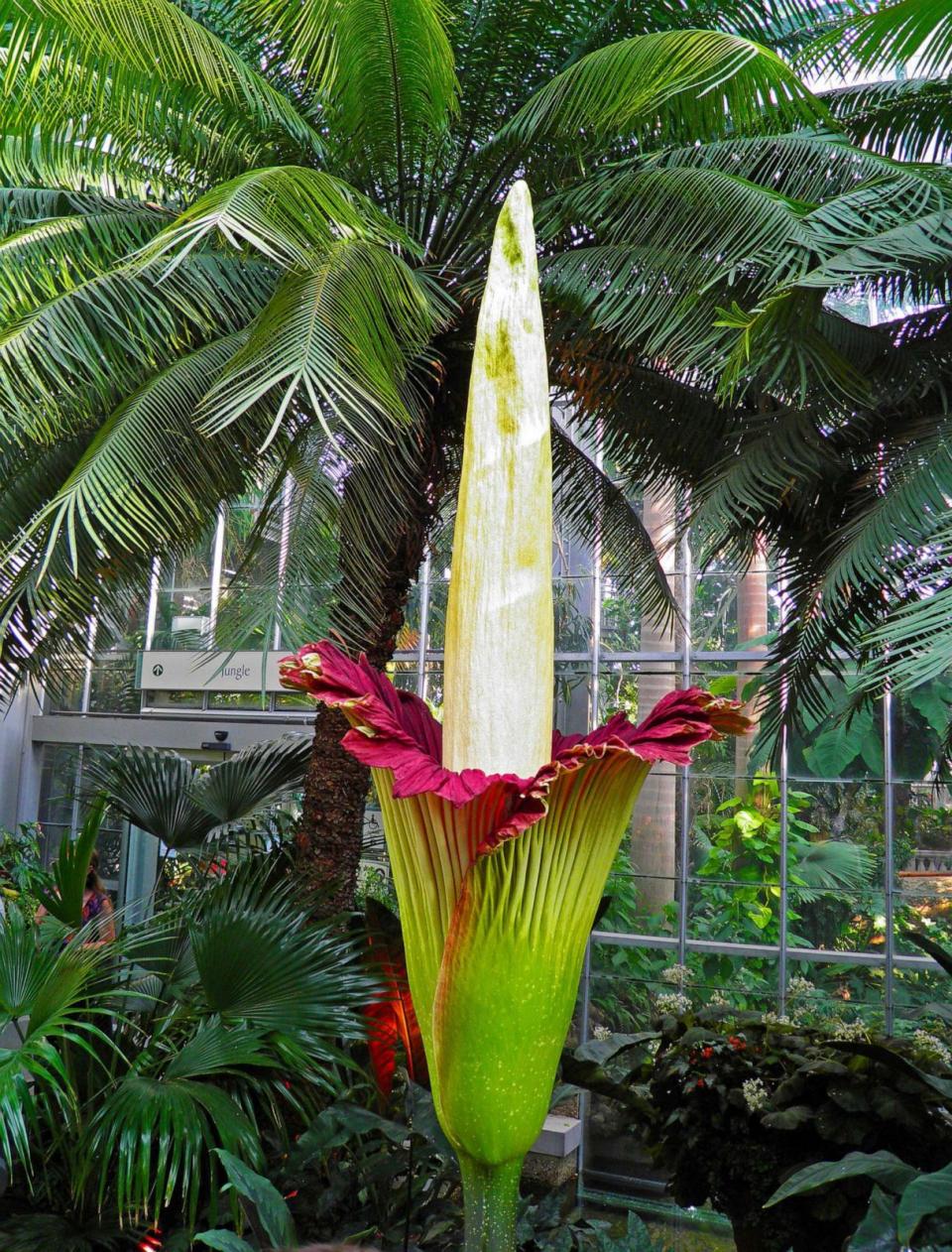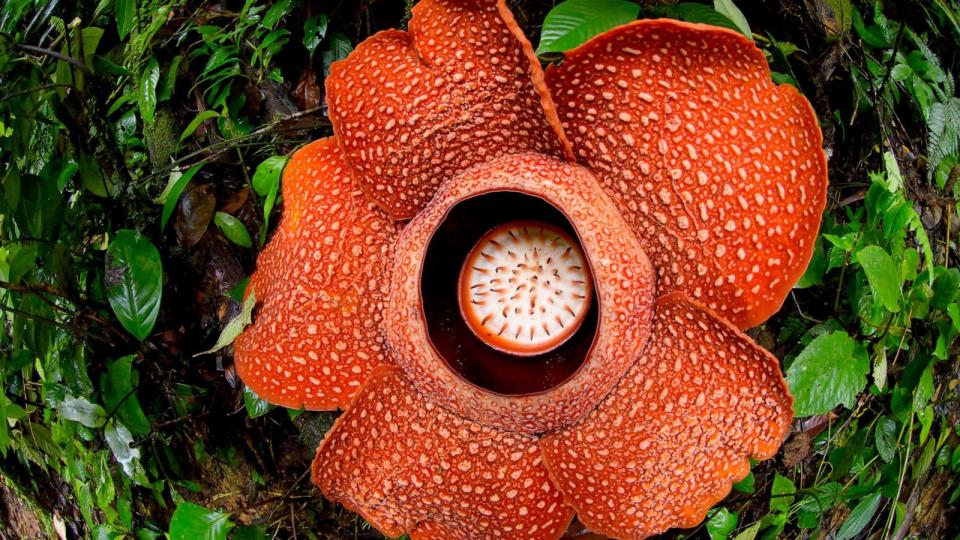World’s largest flower is in danger of extinction, scientists warn
Rafflesia, the flower species which contains some of the world’s largest flowers, is at risk of extinction, scientists have warned in a new study.
The study, co-authored by botanists from the University of Oxford’s Botanic Garden and the University of Philippines Los Bannos, found that 60% of the 42 known species of Rafflesia are facing a "severe risk of extinction."
Native to the forests of Southeast Asia, the Rafflesia species contains the iconic Rafflesia arnoldi -- the single largest individual flower in the world.
Rafflesia are commonly found in Indonesia, Philippines, Malaysia, Brunei and Thailand and the flowers are iconic symbols of Southeast Asian rainforests, featuring in vintage Malaysian postage stamps.
The Rafflesia arnoldi is also sometimes referred to as the "corpse flower" -- a nickname attributed to the pungent foul flesh-like odor it emits to lure pollinators.
The parasitic bloom-red flower has long grabbed the attention of scientists and voyeurs alike. However, the new study -- the first international study examining the threats facing the species -- has found the flower is more in more danger than previously known with 25 of the 42 Rafflesia classified as "critically endangered," 15 as "endangered" and two as "vulnerable" as their survival is now threatened by habitat destruction and illegal harvest fueled by belief in their medicinal properties.

The study also highlights that two-thirds of the current Rafflesia population fall outside protected areas, leaving them unprotected by regional or national conservation strategies.
“We urgently need a joined-up, cross-regional approach to save some of the world’s most remarkable flowers, most of which are now on the brink of being lost,” says Dr. Chris Thorogood, co-author of the study, and Deputy Director and Head of Science at the University of Oxford Botanic Garden and Arboretum.
Yet, despite over half of the Rafflesia species being classified as "critically endangered," only one of them is currently listed on the International Union for Conservation of Nature’s (IUCN) Red List for Threatened Species: the Rafflesia magnifica.
Studies on conservation have found that there is a large discrepancy between the attention given to plant conservation and animal conservation since plants typically receiving less funding in conservation efforts than animals do.
Speaking to ABC News, Dr. Chris Thorogood says the study is a “crucial reminder” that it is not just animals in peril.
“Plants are crucial for our existence -- the air we breathe, the food we eat and the medicines we take. Yet many people scarcely even notice them. The fact is, we are more attuned to seeing animals in the world around us,” says Dr. Thorogood.
“But plants are the foundation for the habitats in which animals thrive. The threat faced by Rafflesia is an important reminder that it’s not just animals that are in peril. My hope is that the world’s largest flowers will be a powerful new icon for plant conservation,” he continued.
The study calls for greater protection of Rafflesia habitats and increased "sampling expeditions and genetic analyses" to better understand the diversity of Rafflesia.

The study highlights that engaging local communities is also key to conservation of the iconic plants.
"Indigenous peoples are some of the best guardians of our forests,” said Adriane Tobias, a forester from the Philippines.
The medicinal properties of Rafflesia are valued by indigenous peoples of northern Borneo where the flower is brewed as a post-partum anti-bacterial agent.
According to the Guinness World Book of Records, the accolade for the world’s largest single flower belongs to a Rafflesia arnoldi discovered in Jan. 2020 in a forest in West Sumatra, Indonesia. The flower measured 111cm in diameter (3 feet, 7.6 inches) and weighed 20 pounds.
Another plant with a large flowering is the corpse flower, also known as Amorphophallus titanum, listed as endangered by the International Union for Conservation of Nature. Fewer than 1,000 Corpse flowers remain in the wild, the United States Botanic Garden home to one.
Dr. Sudan K Pell, Executive Director at the United States Botanic Garden, tells ABC News that it is key to protect the habitats in which these endangered plants live.
“Fortunately for all species, plant and animal conservation go hand in hand. Ensuring a particular species of plant or animal survives to reproduce and create the next generation usually means protecting the habitat in which they live, which has benefits for all organisms in the area,” says Dr. Pell.
“Neither plants nor animals can truly be conserved without conserving the other organisms on which they rely," Pell continued. "Whether it’s a threatened plant’s pollinator or a rare animal’s food source, conservation plans must consider the target species as well as the other species that depend on or support them.”
World’s largest flower is in danger of extinction, scientists warn originally appeared on abcnews.go.com

